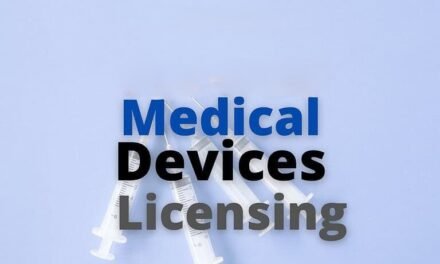
How does the medical devices market in the USA play a major role?

The medical devices market in the USA is the largest and most influential globally, playing a critical role in shaping healthcare trends, driving innovation, and setting regulatory standards for the industry. Here’s how the U.S. medical devices market plays a major role:
1. Market Size and Global Influence:
- Largest Market: The U.S. medical devices market is the largest in the world, valued at over $180 billion in 2023, and is projected to exceed $260 billion by 2028. It accounts for approximately 40% of the global medical devices market.
- Global Hub: The U.S. is a global hub for R&D, manufacturing, and distribution, influencing healthcare delivery and innovation worldwide. Companies in the U.S. often set the benchmark for quality, safety, and innovation.
- Export Leadership: The U.S. is a major exporter of medical devices, with key export markets including Europe, China, Japan, and Canada.
2. Innovation and Advanced Technology:
- Cutting-Edge R&D: The U.S. is at the forefront of medical technology innovation, with substantial investments in R&D by both public and private sectors. Technologies like AI, robotics, 3D printing, telemedicine, and wearable devices are largely driven by U.S.-based companies.
- Breakthrough Devices: The Breakthrough Devices Program by the FDA accelerates the development of technologies addressing unmet medical needs, positioning the U.S. as a leader in high-impact innovation.
- Digital Health Solutions: The U.S. has been pivotal in integrating digital health technologies with medical devices, including remote monitoring, smart sensors, and connected devices that enhance patient outcomes.
3. Strong Regulatory Framework:
- FDA Leadership: The U.S. Food and Drug Administration (FDA) sets the gold standard for medical device regulation globally. Its rigorous approval processes ensure that U.S.-manufactured devices are safe, effective, and reliable.
- Premarket Approval (PMA) and 510(k) Clearances are well-established regulatory pathways that guide global compliance efforts.
- FDA standards influence other regulatory bodies, including Europe’s CE marking and ISO standards.
- Post-Market Surveillance: The U.S. has robust systems for tracking and monitoring medical device performance, such as the Unique Device Identification (UDI) system and the Medical Device Reporting (MDR) program.
4. High Healthcare Spending:
- Healthcare-Driven Demand: With healthcare spending exceeding $4 trillion annually, the U.S. has a strong demand for advanced medical devices that improve healthcare delivery and patient outcomes.
- Sophisticated Healthcare Infrastructure: U.S. hospitals, clinics, and research facilities often adopt cutting-edge technologies, creating a strong domestic market for medical device manufacturers.
5. Presence of Leading Companies:
- Multinational Leaders: The U.S. is home to some of the world’s largest medical device companies, including:
- Medtronic
- Johnson & Johnson
- Boston Scientific
- Abbott
- GE Healthcare
- Stryker
- These companies not only dominate the U.S. market but also play a critical role in global healthcare delivery through exports, R&D collaborations, and acquisitions.
6. Strong Export and Import Ecosystem:
- Exports: The U.S. exports a wide range of medical devices, from diagnostic imaging equipment and surgical instruments to orthopedic implants and wearable devices. Its advanced manufacturing capabilities ensure high-quality products for international markets.
- Imports: While the U.S. is a manufacturing powerhouse, it also imports medical devices from countries like Germany, China, and Japan, creating a dynamic market that blends global technologies.
7. Adoption of AI and Data-Driven Solutions:
- AI-Driven Diagnostics: The U.S. has integrated artificial intelligence (AI) into medical devices, especially for diagnostic imaging, predictive analytics, and patient monitoring systems.
- Big Data and Analytics: The U.S. leads in the adoption of big data to improve device performance, track outcomes, and develop personalized treatment plans.
- Interoperable Devices: U.S. companies focus on creating interoperable systems that connect devices across healthcare networks for seamless data exchange and improved care coordination.
8. High Focus on Patient-Centric Healthcare:
- Customized Solutions: U.S. companies emphasize personalized medicine by developing devices tailored to individual patient needs, such as custom orthopedic implants and prosthetics.
- Wearables and Remote Monitoring: The U.S. market has driven the adoption of wearable devices like smartwatches, fitness trackers, and continuous glucose monitors that empower patients to manage their health proactively.
9. Investment in Startups and Emerging Technologies:
- Venture Capital Funding: The U.S. has a robust startup ecosystem, with significant venture capital funding directed toward medtech startups focusing on innovative devices, diagnostics, and health IT solutions.
- Incubators and Accelerators: Programs like JLABS (Johnson & Johnson) and MedTech Innovator support early-stage startups, fostering innovation and commercialization in the medical device industry.
10. Rapid Response to Global Health Challenges:
- Pandemic Response: The U.S. played a critical role during the COVID-19 pandemic, scaling up the production of essential medical devices like ventilators, PPE kits, and diagnostic tools. U.S. companies also developed innovative testing solutions and remote monitoring systems to address the crisis.
- Global Partnerships: U.S. manufacturers collaborate with international organizations like the World Health Organization (WHO) and UNICEF to address global health challenges, from pandemic preparedness to improving healthcare in low-resource settings.
11. Research and Development (R&D) Leadership:
- High R&D Investments: U.S. companies and academic institutions invest heavily in R&D, driving advancements in areas such as nanotechnology, robotic surgery, and bioengineering.
- Academic-Industry Collaboration: Partnerships between universities, research institutes, and the private sector create a fertile ground for innovation in medical devices.
12. Focus on Sustainability:
- Eco-Friendly Manufacturing: U.S. companies are adopting sustainable practices by using biodegradable materials, reducing energy consumption, and ensuring responsible disposal of medical devices.
- Circular Economy: Many U.S. manufacturers are embracing circular economy principles, such as refurbishing and recycling used devices, to minimize environmental impact.
13. Setting Global Trends:
- Technological Adoption: The U.S. sets trends in adopting new technologies, such as robotic-assisted surgery, minimally invasive procedures, and 3D-printed implants.
- Standardization: The U.S. drives global efforts to standardize medical device regulations and practices, influencing international organizations like the IMDRF (International Medical Device Regulators Forum).
Challenges and Opportunities:
- Challenges:
- High regulatory requirements and long approval times.
- Pricing pressures from insurers and government programs.
- Competition from emerging markets with lower-cost alternatives.
- Opportunities:
- Expansion into global markets, especially in Asia and Africa.
- Growth in digital health and telemedicine solutions.
- Development of low-cost, high-quality devices for underserved populations.
The U.S. medical devices market plays a pivotal role in global healthcare innovation, technology development, and regulatory leadership. Its ability to drive research, manufacturing, and global exports makes it a cornerstone of the healthcare industry. With a focus on patient-centric solutions, digital transformation, and sustainable practices, the U.S. market will continue to lead advancements in medical devices, addressing both domestic and global healthcare challenges.




























